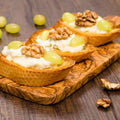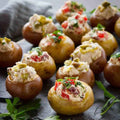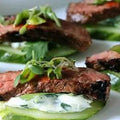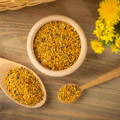
Feeding Your Bees Protein: Pollen Patty Recipe
Boost honeybee colony health with homemade pollen patties! Learn why beekeepers use these valuable supplements and get a step-by-step recipe. Strengthen your hives and support pollination efforts
FUN FACT: Up to 30% of a bee hive's foragers are collecting pollen on any given day.
Subscribe
To join our mailing list and never miss an update!
Feeding honeybees pollen patties is a practice undertaken by beekeepers to promote the health and well-being of their bee colonies. Pollen patties are a valuable supplemental food and protein source to honeybees for several important reasons.
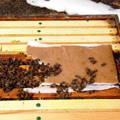
First and foremost, pollen patties provide bees with a consistent and easily accessible source of protein. Pollen is a natural protein source for bees, and it is essential for the development of bee larvae and the overall growth of the colony.
During certain times of the year, such as the late winter and early spring, natural pollen sources can be scarce. This scarcity of natural pollen can limit the colony's ability to raise brood and expand its population. Pollen patties bridge this nutritional gap, ensuring that bees have the protein they need to thrive.
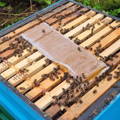
Additionally, pollen patties are especially valuable for stimulating brood production. Adequate protein levels in the diet encourage the queen bee to lay more eggs, resulting in a larger population of worker bees. A strong and populous colony is better equipped to forage, defend against pests and diseases, and produce surplus honey.
INGREDIENTS
This particular recipe will make 4 pollen patties roughly 2” x 6” x 1” in size.
• 2 cup simmering water
• 2 cup granulated sugar
• 4 cup pollen powder or a pollen substitute
• 8 drops of HoneyB Healthy (or your own homemade)
• Wax paper
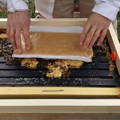
INSTRUCTIONS
1. Bring 2 cups of water to a simmer.
2. Add 2 cups of sugar and stir until the sugar completely dissolves.
3. Add 4 cups of pollen powder (or pollen substitute) to the sugar-water mixture and stir until it reaches a peanut buttery texture.
4. Add 8 drops of HoneyB Healthy (or our recipe to make your own) to the mixture.
5. Place the mixture onto a sheet of wax paper and fold the wax paper over it. Flatten the patty gently under the paper and allow to rest until completely cool.
Pollen patties can be stored in the refrigerator for several weeks or in the freezer for several months. If freezing, be sure to completely thaw and bring the pollen patty to room temperature before placing it in the hive.
When introducing the patty to the hive, position it beneath the top board, making sure it touches the frames so that the bees can access it. It's best to place it directly in the center of the frames, rather than on the sides, to encourage the bees to feed on it.
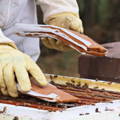
Trending Articles
WORD OF WARNING:
Do not feed your honeybees pollen patties in the Autumn, particularly in the South. This is because yellow jackets are actively looking for protein in the Fall to prepare for their own Winter needs. Attracting yellow jackets to your hives will greatly increase the likelihood that they will invade your hive, kill the entire colony and consume their unfortunately little bee bodies for the protein they desire.
Pollen patties can be a crucial resource for beekeepers who aim to maintain and grow their bee colonies. By providing supplemental nutrition, beekeepers can help their bees weather periods of food scarcity or environmental stress, ensuring the longevity and productivity of their hives.
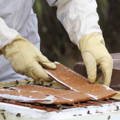
Pollen, when transformed into bee bread, serves as the honey bee's primary source of protein, alongside contributing fats, minerals, and vitamins. This protein plays a pivotal role in fostering the growth of the hive and sustaining the development of young bees.
Notably, pollen stands out as an exceptionally diverse nutritional resource for honey bees. It's worth noting that this protein consists of amino acids, with 10 of them identified as indispensable for the well-being of honey bees.
Overall, feeding honeybees pollen patties is a proactive measure that contributes to the health and success of bee colonies and, by extension, supports pollination efforts and honey production.
Trending Products
Copyright©2023 All rights reserved. We love to have you share our article as long as you include a direct link to this page. This article or any portion thereof , including all images, may not be reproduced or used in any manner whatsoever without the express written permission of Gypsy Shoals Farm.

